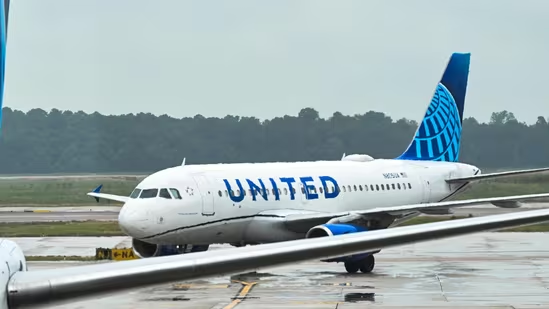A Boeing 787 Dreamliner operated by United Airlines declared a “Mayday” emergency shortly after takeoff from Washington Dulles Airport on July 25, alarming passengers and aviation observers alike. The wide-body jet, headed for Munich, Germany, experienced a left engine failure just minutes into the flight, prompting an immediate emergency response by the flight crew.
As the aircraft climbed to about 5,000 feet, the crew identified a serious issue with the left engine. Without hesitation, they declared a Mayday, the most urgent distress signal in aviation, and requested an immediate return to the departure airport. The plane then entered a holding pattern northwest of Washington while the pilots worked through safety protocols.
Table of Contents
Flight Details and Emergency Sequence
This particular flight, designated UA108, was using a Boeing 787 Dreamliner registered under tail number N27901. Upon detection of the engine problem, the pilots kept the aircraft stable and coordinated with air traffic control to begin dumping fuel. This critical step reduced the aircraft’s weight to ensure a safer landing, as wide-body jets like the Dreamliner typically take off with a weight far above landing limits.
The fuel dump lasted for over two hours, during which the aircraft remained at a controlled altitude of around 6,000 feet. Once deemed safe to return, the flight crew performed an instrument landing system (ILS) approach to Runway 19C at Washington Dulles.
After landing, the aircraft had to be towed off the runway due to the inoperative left engine. Despite the dramatic nature of the event, all passengers and crew onboard were reported safe, and no injuries occurred.
Why the Boeing 787 Dreamliner Incident Matters
The Boeing 787 Dreamliner is a technologically advanced aircraft, known for its fuel efficiency, composite material structure, and long-haul capabilities. Incidents involving this aircraft model typically draw attention due to its importance in global commercial aviation.
Engine failure in a twin-engine aircraft is considered a high-priority event. The successful management of such a failure by the crew not only highlights the effectiveness of their training but also reinforces the aircraft’s built-in safety systems.
Timeline of Events
Here’s a breakdown of the timeline for better clarity:
- Takeoff: UA108 departs from Washington Dulles for Munich.
- At ~5,000 feet: Left engine fails; pilots declare Mayday.
- Holding Pattern: Aircraft circles for over 2 hours while dumping fuel.
- Landing: Plane lands safely on Runway 19C and is towed off.
- Status: All passengers and crew are safe; aircraft grounded for inspection.
Aircraft and Crew Response
The Boeing 787 Dreamliner involved is one of the newer generation aircraft in United Airlines’ long-haul fleet. It is equipped with advanced systems that automatically alert pilots to system failures, allowing for quick decision-making. The pilot’s ability to remain calm, follow standard operating procedures, and return the aircraft without further incident is being widely praised.
The flight crew is now undergoing debriefing as part of the standard post-incident protocol, and the aircraft remains grounded pending a full technical examination of the affected engine.
Passenger Reactions and Aftermath
Passengers reported a delay in arriving at their destination, but many expressed relief and gratitude for the professionalism shown by the crew. Some noted feeling vibrations or hearing unusual noises from the engine area before the announcement of the Mayday call.
United Airlines has begun rebooking affected passengers on alternate flights to Munich and offering full support during the disruption.
Broader Aviation Implications
While the quick recovery in this event is a positive sign, any Mayday declaration involving a Boeing 787 Dreamliner warrants industry-wide attention. Investigators will closely examine maintenance records, engine performance data, and flight recorder inputs to determine the root cause of the failure.
This incident also serves as a reminder of the importance of maintaining high standards in pilot training and aircraft readiness, particularly for aircraft operating intercontinental routes.
Conclusion
The recent Mayday declaration by United’s Boeing 787 Dreamliner on its Munich-bound flight demonstrates the unpredictable nature of air travel and the critical role played by trained professionals in ensuring safety. Thanks to the swift actions of the pilots, a potentially dangerous situation was handled with precision, resulting in a safe landing and no injuries.
As investigations continue and the aircraft undergoes inspection, the aviation community will look to this case for insights and learnings. Stay tuned for more updates as details emerge, and feel free to share your thoughts on this event in the comments below.
